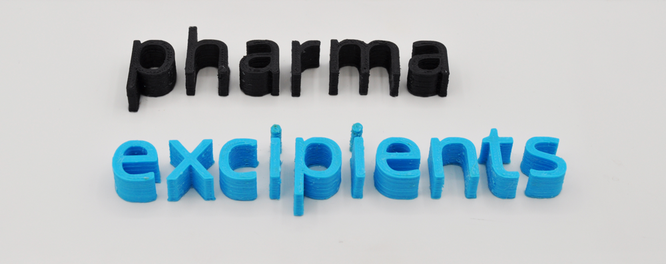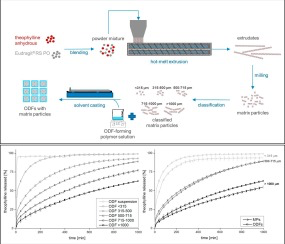- Home
- Blog
- News
- Basics
- Sources
- Agencies, Regulatory & Organisations
- CERSI Excipients Browser
- Excipient Report
- Excipient DMF List
- EXCiPACT Certified Companies
- Excipient Documentation
- Excipient EINECS Numbers
- Excipient E-Numbers
- FDA Inactive Ingredient List
- FDA GRAS Substances (SCOGS) Database
- IPEC Americas
- USP - U.S. Pharmacopeia
- Definitions
- Whitepapers / Publications
- Supplier
- Services
- Media
- Events
- 1st pharmaexcipients Poster Award
- Event Calendar
- Events featured by pharma-excipients
- 4th Annual Formulation & Drug Delivery Congress
- DDF Summit
- ExcipientFest Americas
- ExcipientFest Asia
- Global CompliancePanel
- International Conference and Exhibition on Pharmaceutics & Novel Drug Delivery Systems
- Formulation & Drug Delivery USA Congress
- Laboratory Medicine 2018
- Making Pharmaceuticals Europe
- Making Pharmaceuticals Exhibition
- Pharma Integrates
- PharmaExcipients China @CPhI China
- TTC Technology Training Center
- Jobs
- Online Sourcing
- Contact
22. August 2018
The effects of excipients on the accuracy of tablet subdivision are severely underinvestigated. In this study, placebo tablets were prepared using a combined mixture design of fillers and binders to evaluate the effect of these excipients on subdivision accuracy. The responses assessed were mass loss, mass variation, tablet fragmentation, and increased friability. Dicalcium phosphate dihydrate (DCP) gave rise to more uniform and denser tablets than microcrystalline cellulose (MCC), thus...
07. June 2018
Wet granulation is mostly used process for manufacturing matrix tablets. Compared to the direct compression method, it allows for a better flow and compressibility properties of compression mixtures. Granulation, including process parameters and tableting, can influence critical quality attributes (CQAs) of hydrophilic matrix tablets. One of the most important CQAs is the drug release profile. We studied the influence of granulation process parameters (type of nozzle and water quantity used as...
07. June 2018
3D printing evolved as a promising technique to improve individualization of drug therapy. In particular, when printing sustained release solid dosage forms, as for instance implants, inserts, and also tablets, estimation of the drug release profile in vivo is necessary. In most cases, corresponding analyses cannot be performed at hospital or community pharmacies. Therefore, the present study aimed to develop a sustained release drug delivery system produced via 3D printing, which allows dose...
28. May 2018
Orodispersible films (ODFs) are an advantageous dosage form to accomplish patient convenience and compliance in oral drug delivery. They provide a number of special application features, such as the ease of administration without water and suitability for patients with swallowing problems. However, this promising dosage form has been limited to immediate release formulations so far. The aim of this study was to develop a thin film produced by solvent casting, which is rapidly disintegrating...
07. May 2018
The aim of this research was to design and evaluate a hydrophilic matrix system for sustained release of glipizide, a weakly acidic poor soluble drug. A combination of inclusion complexation and microenvironmental pH modification techniques was utilized to improve the dissolution and pH-independent release of glipizide. Hydroxypropyl-β-cyclodextrin (HP-β-CD) was used as the complexation agent while sodium citrate and magnesium oxide (MgO) were used as model pH modifiers. The hydrophilic...
07. October 2017
Burst drug release is often considered a negative phenomenon resulting in unexpected toxicity or tissue irritation. Optimal release of a highly soluble active pharmaceutical ingredient (API) from hypromellose (HPMC) matrices is technologically impossible; therefore, a combination of polymers is required for burst effect reduction. Promising variant could be seen in combination of HPMC and insoluble Eudragits® as water dispersions. These can be applied only on API/insoluble filler mixture as...
28. September 2017
A comprehensive model with all effective phenomena in drug release such as diffusion, swelling and erosion was considered. In this work, a mathematical model was developed to describe drug release from controlled release HPMC matrices as a favorable system in pharmaceutical industries. As a novel study, the impact of the MCC presence as a filler in tablet preparation process was considered in the mathematical model. In addition, we found that the volume expansion of these polymeric matrices did...
24. September 2017
Objective: The aim of present study was to prepare and evaluate the trans- dermal lms (TFs) of Nifedipine (NFDP). Methods: The TFs were prepared by solvent evaporation technique and twelve formulations of NFDPTFs were prepared by taking HPMC E15 and Eudragit L100 in different ratios. Polyethylene glycol (15%) and Dimethyl sulfoxide (DMSO) were incorpo- rated as plasticizer and permeation enhancer respectively. DMSO was in- corporated in the formulations F7-F12 but it was absent in F1-F6....
16. September 2017
Results of experiments on prolonged release of paracetamol from polymer matrix tablets with cross-linked poly(acrylic acid) Carbopol®Ultrez 21 as the prolonging polymer were reported. The effects of factors such as tableting technology, type of alkaline agent, and ratio of Carbopol® to alkaline agent on paracetamol release kinetics were studied. It was established that matrices prepared by wet granulation had the best potential for prolonging the release. The ratio of Carbopol®to alkaline...
14. August 2017
The potential for use of polymers in controlled drug delivery systems has been long recognized. Since their appearance in the literature, a wide range of degradable and non-degradable polymers have been demonstrated in drug delivery devices.






